How to Get Rid of Garbage Disposal Smells (5 Easy Methods)
-
Pete Ortiz
- Last updated:
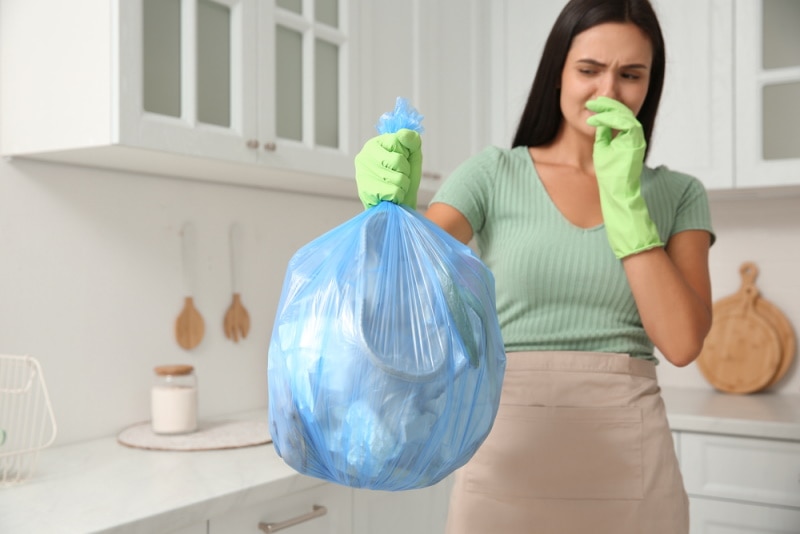
We tend to think our garbage disposals can handle anything we throw in them, which may explain why we’re caught off guard by what can come out of them.
Garbage disposal smells can waft through the house in short order if you’re not paying attention to what you send down the sink. You’ll need to handle the food buildup, bacteria, and mold sitting in the chamber to destroy the odor, but it can get tricky with a potentially dangerous appliance.
We’ll show you the safest, simplest, and most effective approaches with these five easy ways to eliminate garbage disposal smells.
The 5 Ways to Get Rid of Kitchen Garbage Smells
1. Ice Cubes and Salt
A smelly garbage disposal typically results from decaying food on its walls. Over time, the accumulation of sticky food bits can create clogs, and you’ll have to deal with poor drainage on top of a worsening odor.
Covering the smell is only a temporary solution. To eliminate the odor for good and optimize the performance of your garbage disposal, you need to dislodge that gunk and grime.
Fortunately, you likely have one of the safest and most effective fixes conveniently sitting in your freezer. Follow these simple steps to remove garbage disposal smells with ice:
- Put 1–2 whole ice cubes in the garbage disposal and turn it on
- Add a few more ice cubes one at a time as the disposal runs for 30–60 seconds
- Turn the unit off and flush it with cold water
- Check for any remaining smells after an hour
Add a cup of coarse rock salt or sea salt with the ice cubes for extra cleaning action. Ice and salt are a convenient and non-toxic way to scrub your garbage disposal walls and blades while neutralizing smells.
You can combine the method with many other solutions on this list. As a routine practice, using these all-natural ingredients will keep your disposal draining smoothly, working efficiently, and free of nasty odors.
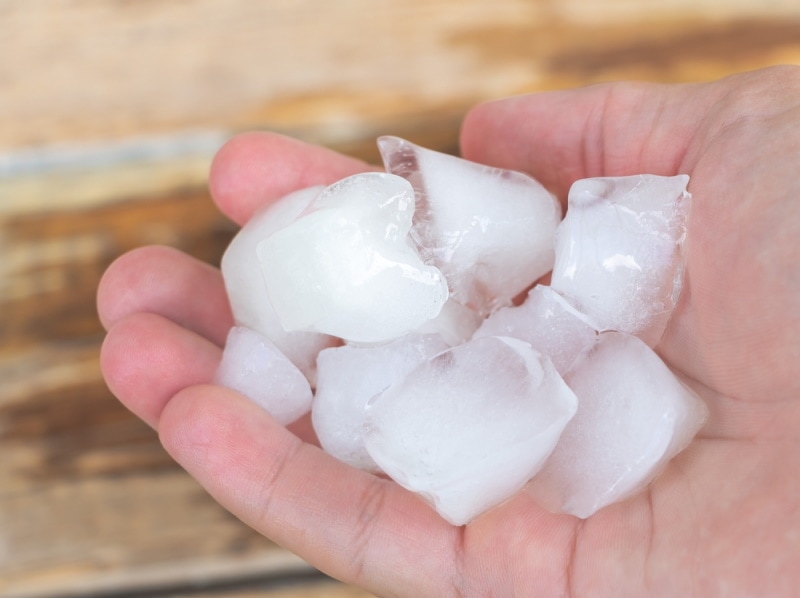
2. Lemon or Citrus Slices
Your disposal shouldn’t replace your compost or trash bin, but running citrus remains through the disposal occasionally can keep foul smells at bay.
Studies have revealed the antimicrobial activity of various essential oils in citrus peels. Putting them in the disposal can help kill the bacteria and fungi that create those foul smells, while the citric acid will break down grease and grime. The rinds of lemons, limes, and other citrus fruits will also impart a pleasant scent as they clean.
Add squeezed lemon leftovers to the disposal, or cut up whole pieces of citrus fruit for more deodorizing power. Turn the disposal on for 30 seconds (or until you hear it running clear) while you run cold water.
Combine lemon pieces with the ice and salt method for even better results. To get the most out of this technique, use half a squeezed lemon and some coarse salt to scrub the sink basin before tossing them into the garbage disposal.
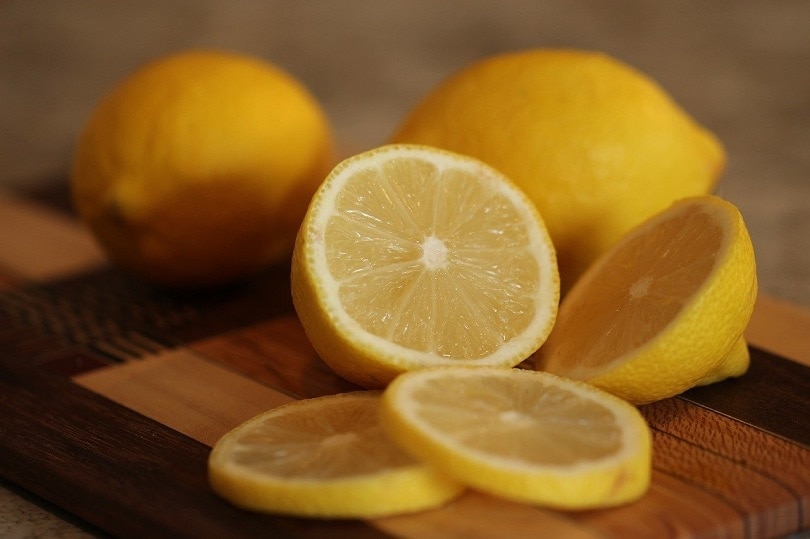
3. Baking Soda and Vinegar
Baking soda and vinegar are two of the most versatile DIY cleaners around the home, and in the garbage disposal, they can combine to help break up odor-causing grunge.
When baking soda and vinegar mix, they cause a fizzing reaction that creates water, sodium acetate (a salt), and carbon dioxide. The saltwater left behind isn’t particularly practical as a cleaner, but the explosive, bubbling release of CO2 can loosen stuck-on dirt and grime.
- Dump one cup of baking soda in the garbage disposal
- Slowly pour one cup of distilled white vinegar into the disposal
- Wait several minutes for the baking soda and vinegar to finish fizzing
- Rinse with cold water
If you don’t have vinegar, you can achieve a similar reaction with a cup of lemon juice.
Consider using your cup of baking soda with a bit of water to scrub down the inside of the sink before scraping it into the disposal. The gentle abrasiveness of baking soda will remove stuck-on food, grease, and light rust, restoring the look of the basin.
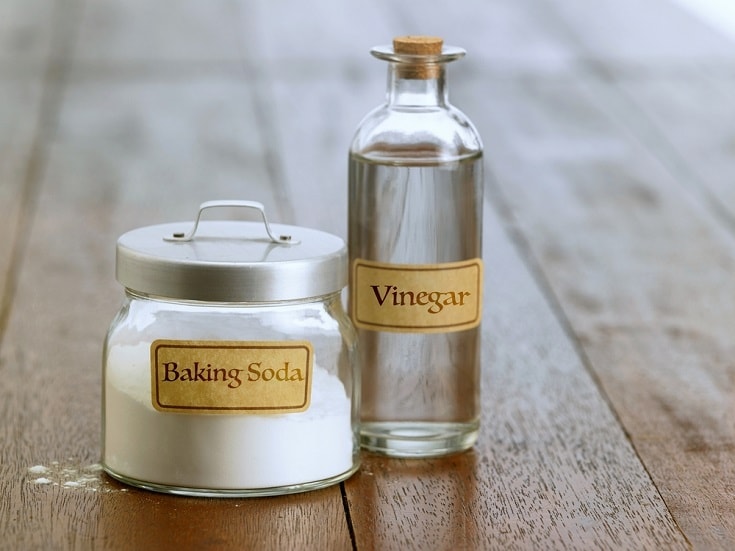
4. Dish Liquid and Brush
Dish soap is the most convenient tool for removing garbage disposal smells. It’s also one of the most effective and easiest to use. Dish soap and hot water make an excellent solution for grease clogs in kitchen drains. In the garbage disposal, add dish liquid to nearly any cleaning method for extra power against grease and grime, or use it by itself for quality results.
The best way to remove garbage disposal odors with dish soap is to scrub it into the disposal’s walls. Use a bottle brush that can slip past the rubber flap. Pour a few drops of dish soap on the bristles and spritz it with water to start a lather. With the disposal off, scrub the interior walls with the brush until you feel it’s sufficiently clean. Flush with plenty of warm water.
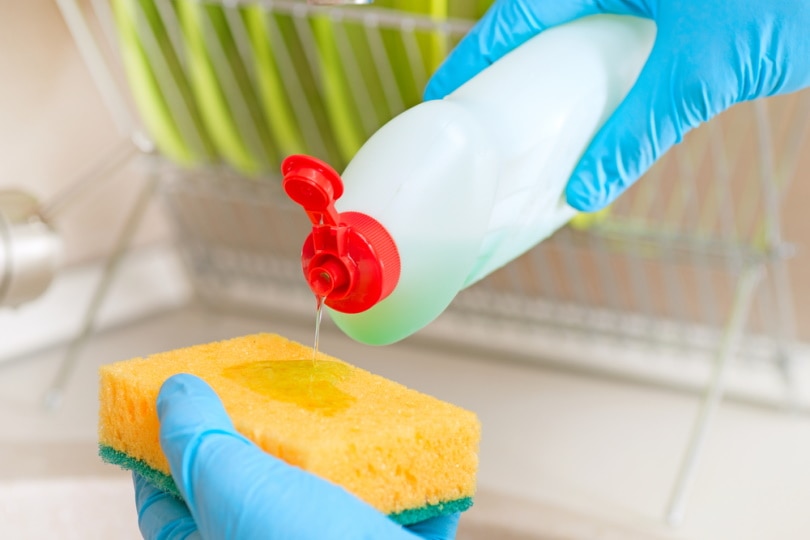
5. Mouthwash
While it won’t break up any stuck-on food grime, mouthwash is a sound solution for garbage disposal smells due to its antimicrobial qualities and minty freshness.
Pour a capful of mouthwash into your sink, and let it sit for 30 seconds before running the disposal and rinsing it with hot water. You can also pour mouthwash over ice to give off a minty aroma as you grind out stuck-on food waste.

How to Avoid Garbage Disposal Smells
A garbage disposal can spoil you. All that convenience makes it easy to see it as an undiscriminating option for leftover food scraps, but certain substances can only go through it in moderation, if at all.
Many foods can bind or dull the blade, stick to the disposal walls, cause clogs, and create foul odors. Everyday items to avoid putting in the garbage disposal include:
- Cooking oils, grease, and fats
- Meat products
- Fibrous fruits and veggies (e.g., asparagus, celery, corn husks, banana peels)
- Starchy foods (e.g., pasta, potatoes, peas, lentils)
- Coffee grounds
- Nuts, seeds, and fruit pits
- Bones and seafood shells
- Eggshells
The only items that should go into a garbage disposal are organic materials that won’t clog the drain. A dash of coffee grounds and a few peanuts here and there probably won’t do significant damage, but avoid using the disposal as a catch-all.
When you use your garbage disposal throughout the day, run it for at least 30 seconds. It needs to break down food particles completely to ensure every bit goes down the drain. Always run cold water while using the disposal to prevent clogs. Listen for a clean-running sound, and continue flushing it with cold water for about 10 seconds after turning it off.
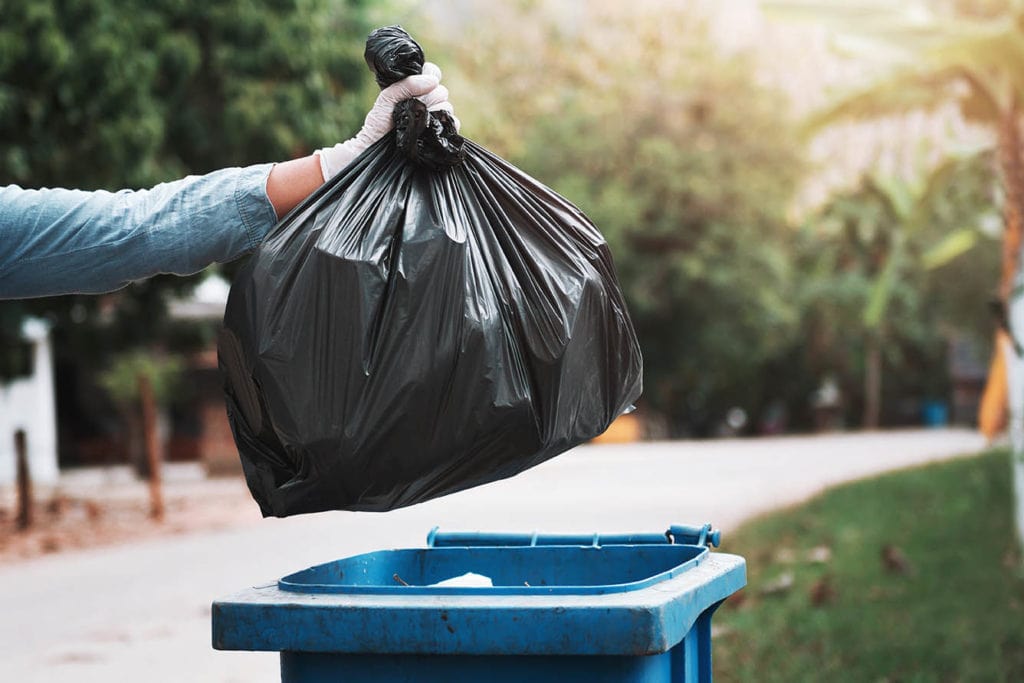
Conclusion
You can spring for expensive scouring powders designed for removing garbage disposal smells, but they’re hardly the most practical solution. When an overpowering aroma hits your nostrils, you probably don’t want to head to the store and spend money to solve the problem.
Prevention is the best way to manage garbage disposal odors. With proper use and regular upkeep, strange smells may never be a problem. But if you ever catch a whiff of something strange, these safe and simple solutions are all you need to improve the kitchen atmosphere.
See also: How to Remove a Garbage Disposal (5 Easy Steps)
Featured Image Credit: New Africa, Shutterstock
Contents


